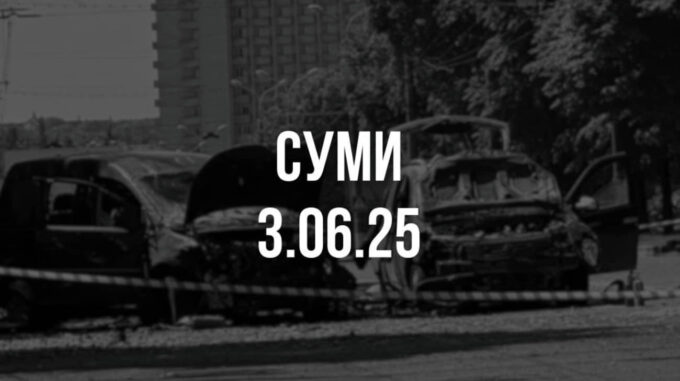On June 3, the Ukrainian city of Sumy was again targeted by Russian troops, who carried out shelling using the “Grad” multiple rocket launcher system

This news quickly spread among the residents of the city and caused a wave of anxiety and unrest, as previous shellings—whether accidental or deliberate—had struck residential neighborhoods, destroying lives and infrastructure. However, the current conditions and scale of the attack evoke particular concern, given that Russia is demonstrating its ability to employ more long-range artillery in the border zone, which was previously under occupation or entirely outside the immediate vicinity of the city. According to information received from sources of "Ukrainska Pravda," in the morning of June 3, Russian forces launched a missile attack on the city using a "Grad" multiple launch rocket system with a caliber of 122 mm, whose effective range is reported to vary from 20 to 40 kilometers. Expert analyses and law enforcement reports indicate that this strike was aimed at the city center, targeting cars stopped at traffic lights, and resulted in a tragedy—three adults and one seven-year-old child were wounded or killed as a result. The child, Masha, with a lung fragment, was urgently transported to Kyiv’s "Oshchadmed," which sparked significant resonance both in local media, among deputies, and among residents. Preliminary official reports and local media initially indicated that the Russians used long-range artillery systems, specifically the "Tornado," capable of firing up to 120 kilometers and considered more modern and effective. However, it was later confirmed that the missile strike was likely conducted from the "Grad" system or its modern modification, "Tornado-G," which has a maximum range of about 40 kilometers. This means that the shelling was carried out from territory within Russia, from areas near the Sumy border, such as the villages of Synyak, Kulbaki, Novoiivanivka, or from the regions of Gueva and Hornali. This once again confirms that Russian troops continue to demonstrate their ability to carry out shelling from the aggressor’s side, bypassing Ukrainian control and response. An analytical review of the situation suggests that at the moment of the attack, Russian forces engaged in a targeted tactic of intimidation of the population and attempted to demonstrate their capacity for long-distance fire. As a result, the use of "Grad" or similar systems is not only a way of destroying targets or defeating military objectives but also a psychological operation aimed at civilians, seeking to destabilize the region. However, experts note that the tactic of city shelling using long-range missile systems has not yet become widespread or systematic. It is more a method of increasing tension, psychological pressure on residents, and political pressure on Ukrainian authorities. Nonetheless, these actions have a clear targeted impact—forcing Ukrainian leadership to reconsider their positions and succumb to demands or proposals from powerful forces. According to data obtained from law enforcement agencies and confirmed by the Office of the Prosecutor General, this strike was carried out from Russian territory. This reinforces the assumption that occupiers are actively using their ability to strike Ukrainian cities, choosing launch sites from regions bordering Ukraine, primarily from the north and east. A distinctive feature of this approach is that Ukraine currently lacks the capability to quickly detect and intercept such attacks, creating additional danger for the city’s civilians and surrounding regions. Furthermore, specialists emphasize that the use of reactive systems in border areas destroys any illusions of safety and introduces new levels of risks—including the possibility of rapid and sudden repetitions or even escalation of shelling. Even if such attacks are not yet systematic, this tactic lays the groundwork for more massive and targeted actions in the future. Political analysts and military experts interpret this behavior by Russia more as a psychological and political move—an attempt to intimidate, demonstrate the ability to operate beyond previous limits, and force Ukrainian leadership to negotiate on the aggressor’s terms. The hope that these actions will compel Ukraine to compromise its principles is weakening with each new shelling. Despite all the trials, Ukrainians continue to show resilience, fight for their cities, and resist psychological pressure. Meanwhile, the situation in the Sumy direction remains tense. Considering the pace and nature of enemy strikes, experts analyze future developments, focusing not only on military and technical aspects but also on the psychological state and mobilization mood of the population. More details about the situation in other regions, the consequences following the Ukrainian forces’ withdrawal from Kurshchyna, and analysis of potential scenarios for approaching borders and their implications for the city will be presented in upcoming materials.

